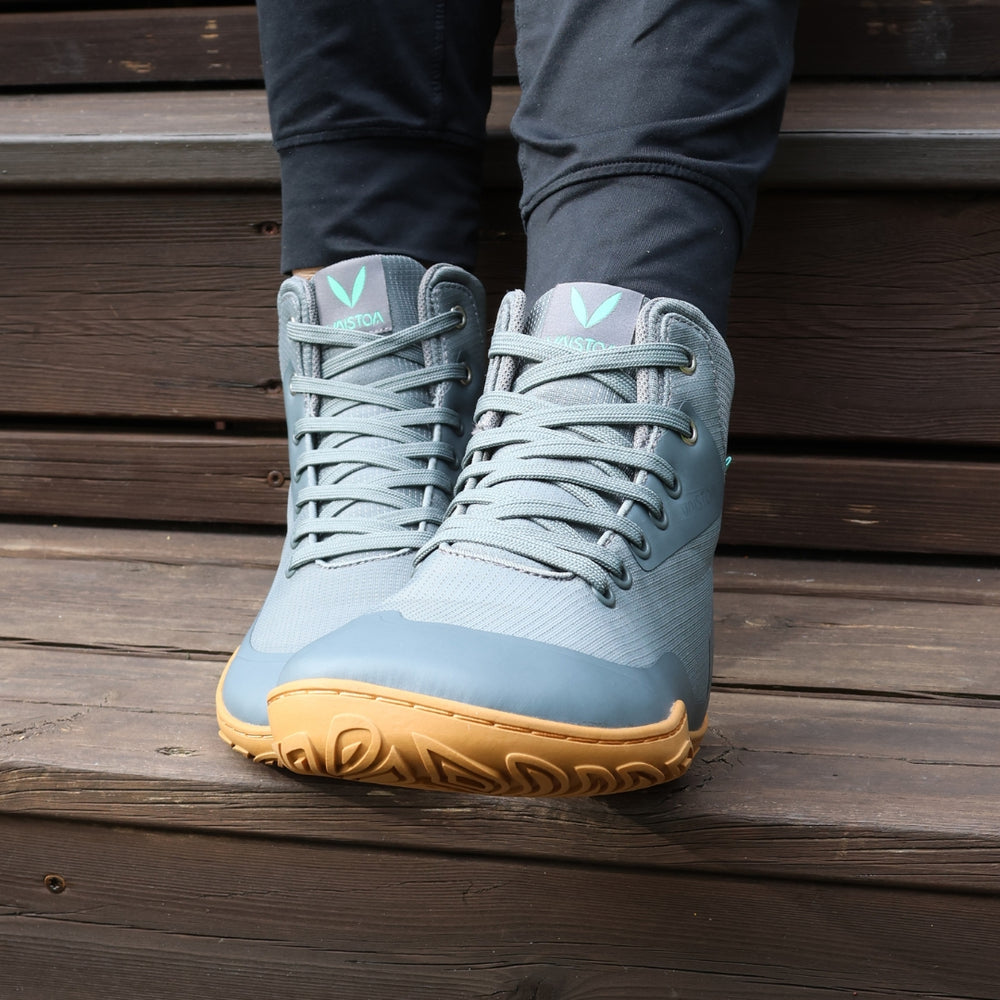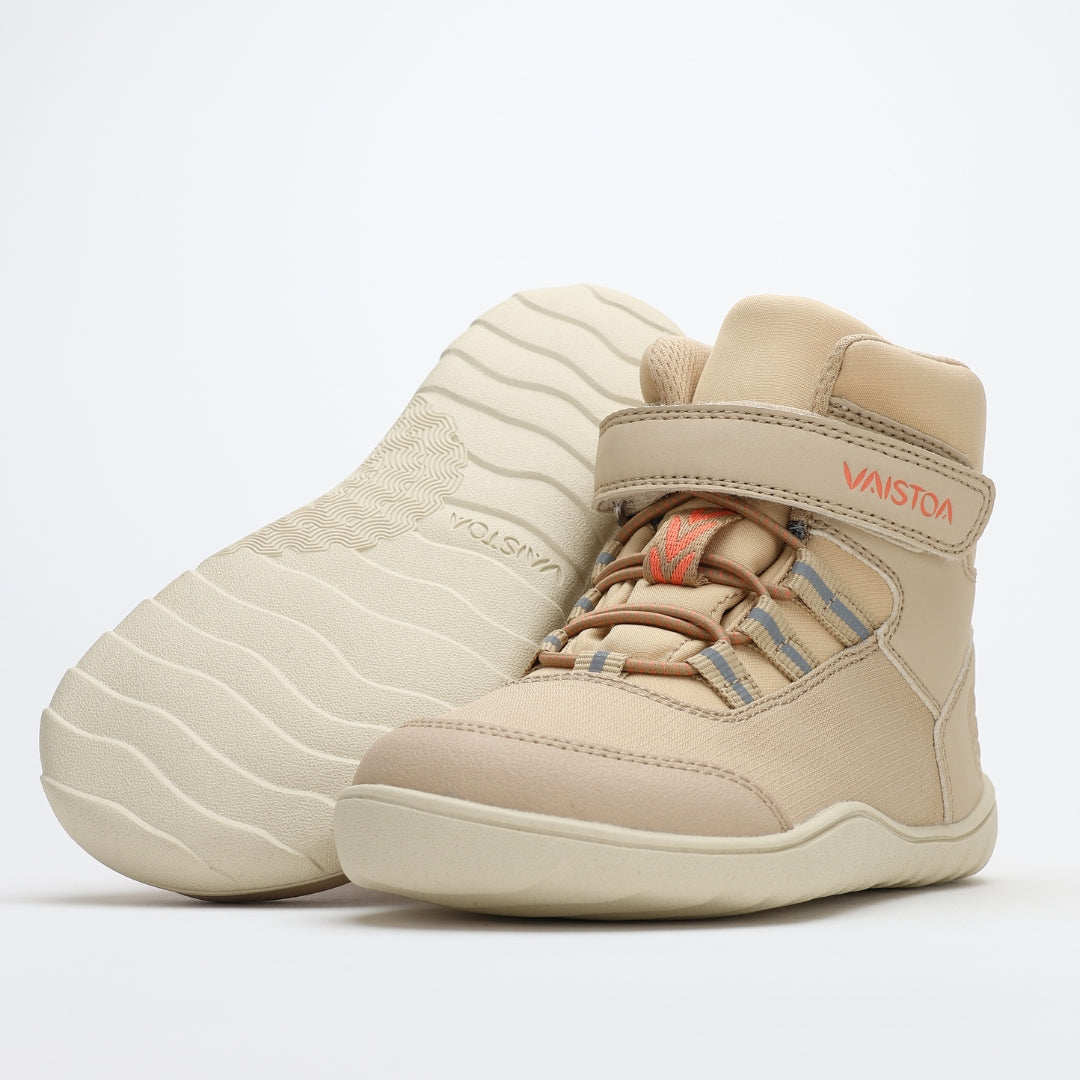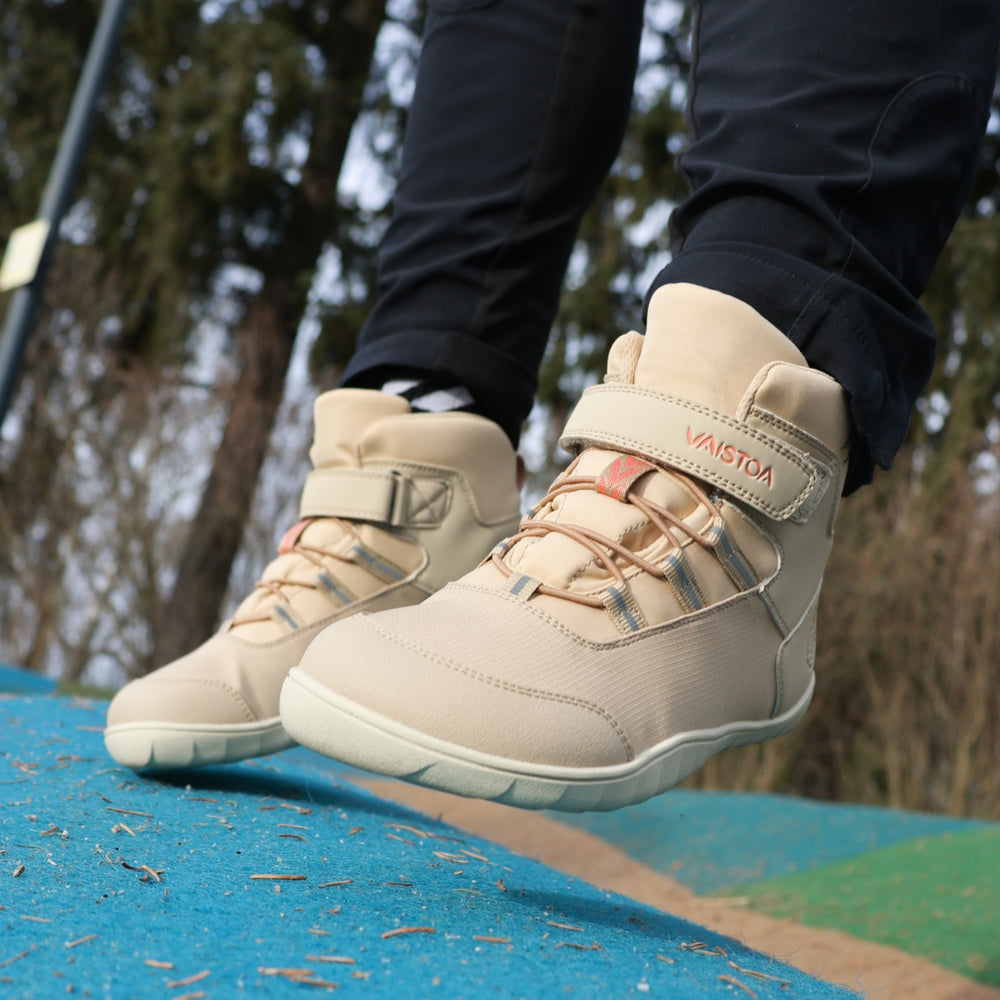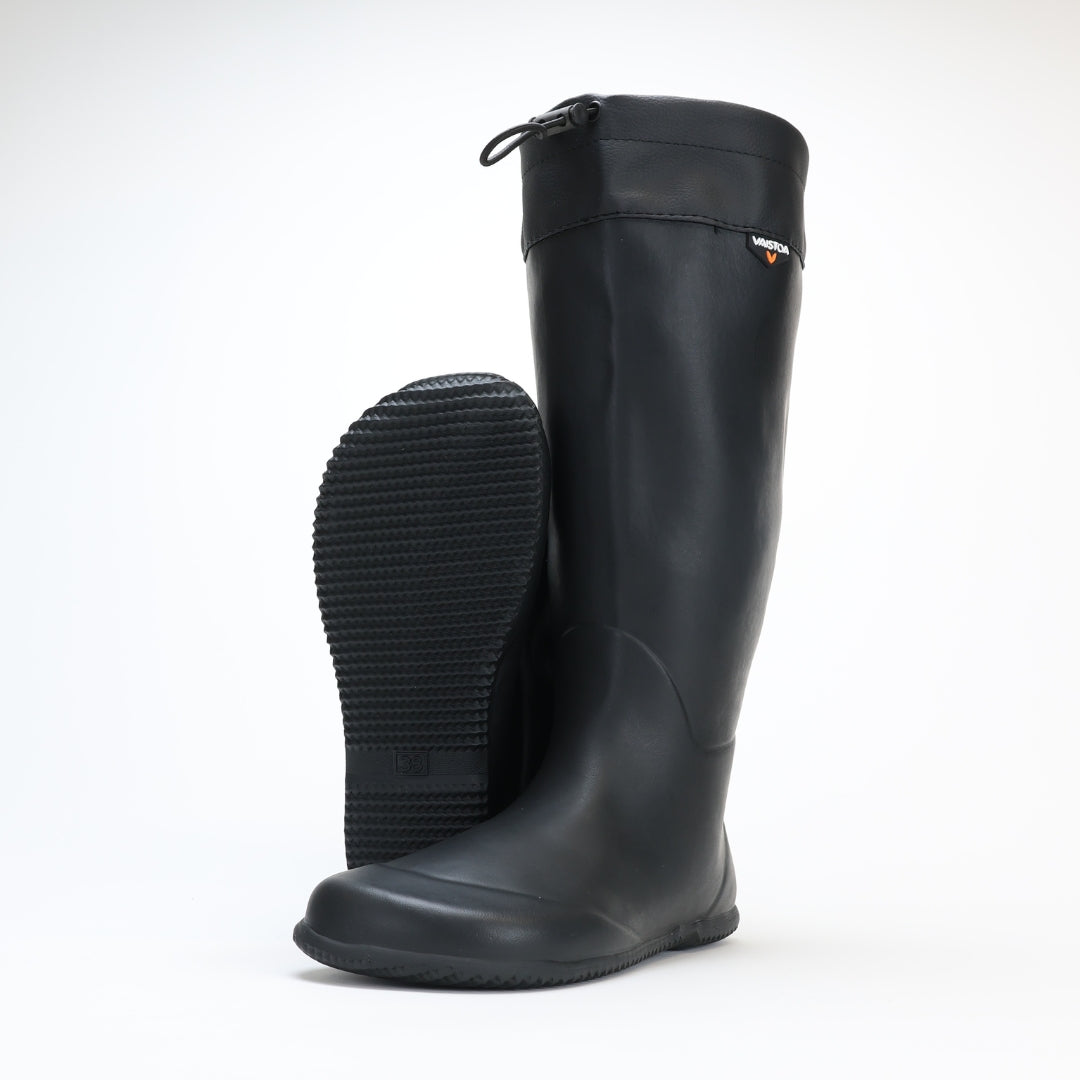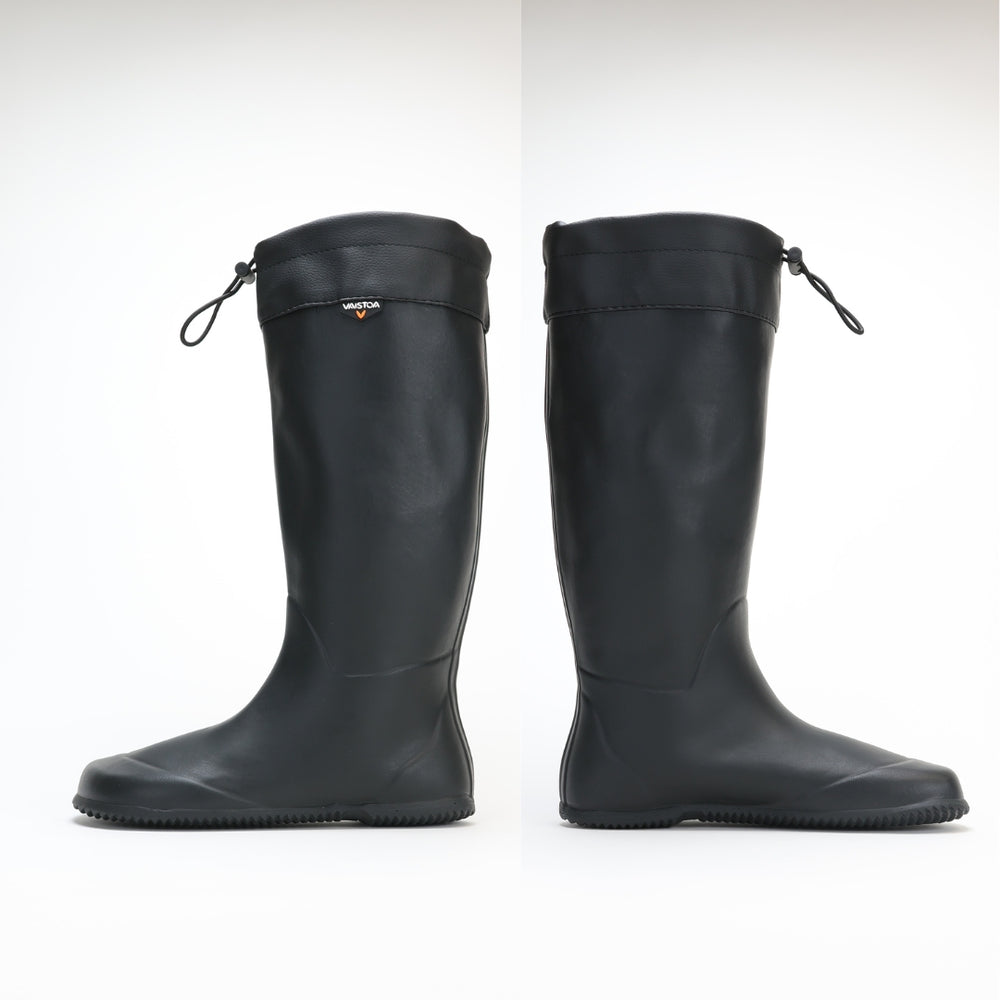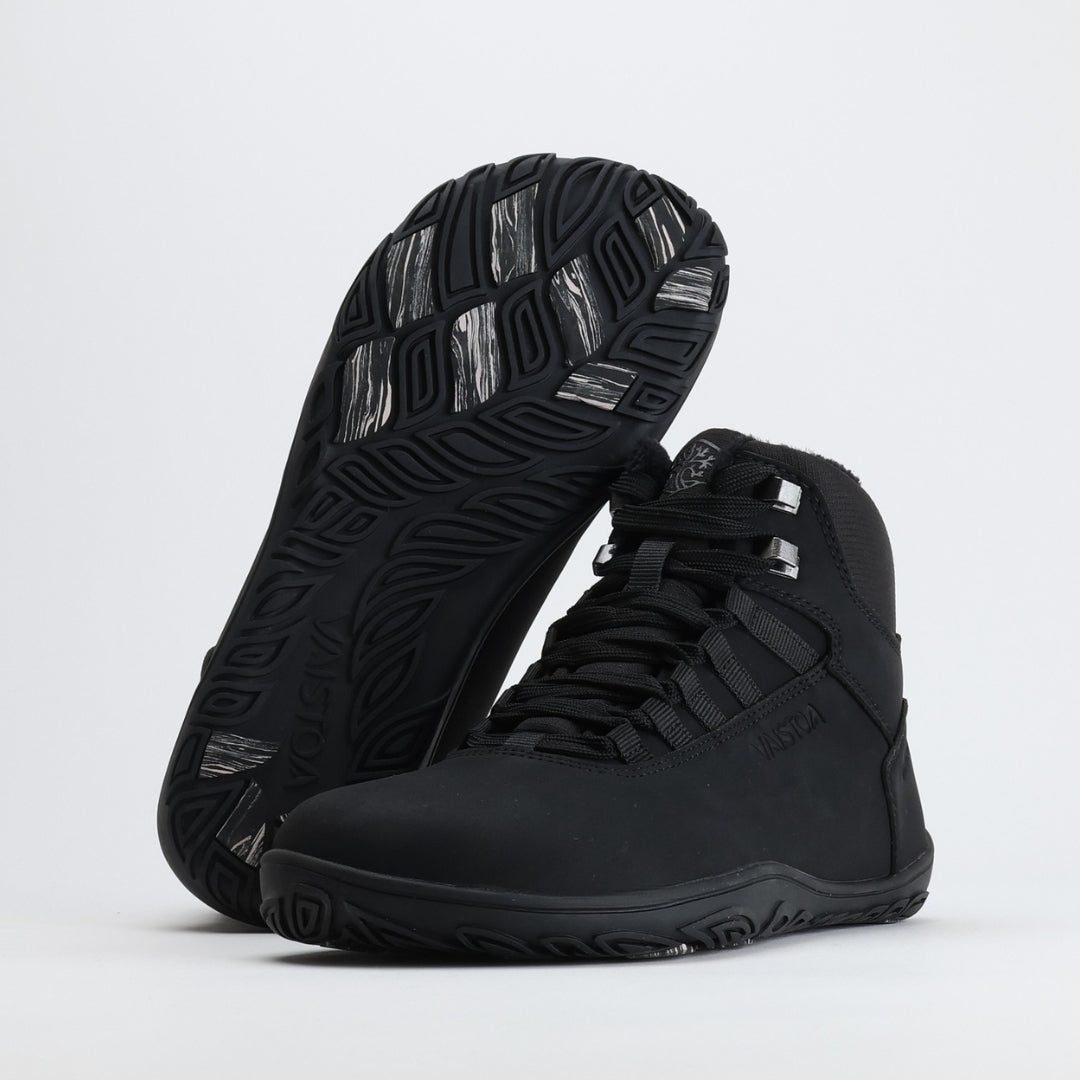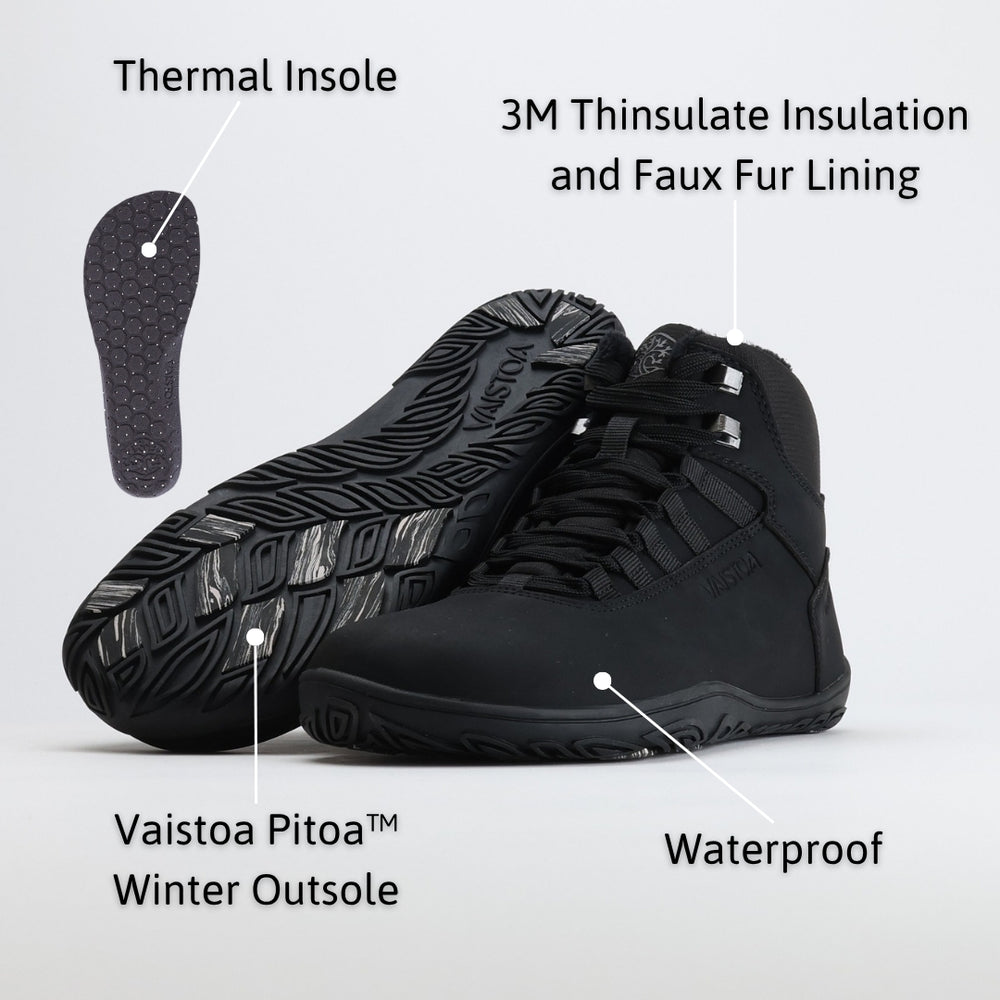Barefoot Trekking & Hiking Shoes
Why Barefoot Hiking Shoes Might Be the Most Natural Upgrade You Never Knew You Needed
If you’ve ever ended a hike with sore feet, aching knees, or shoes that felt like they were working against your body, you’re not alone. Traditional hiking footwear may feel supportive, but it actually prevents your feet from moving and functioning as they naturally should. Barefoot hiking shoes offer a different approach: less interference, more freedom, and stronger feet.
Why I Hiked Barefoot in Norway and Lapland

Hi, my name is Henry, founder of Vaistoa.
I already knew the benefits of barefoot shoes—stronger feet, fewer injuries, and better natural stability. But I wanted to push that idea to the extreme. So I set out to hike barefoot through the rugged terrain of Lapland and Norway. No shoes. No padding. No ankle support. Just skin on earth.
The conditions were exactly what traditional footwear marketing warns you about: sharp rocks, uneven trails, steep climbs. But instead of rolling ankles or struggling for balance, I moved with precision and control. That experience reminded me why I left “supportive” trekking shoes behind—because they do the opposite of what they claim. They reduce ground feel, create instability, and increase the risk of ankle injuries.
The truth is simple: you don’t need extra support when your feet are allowed to do their job.
What Are Barefoot Hiking Shoes?
Unlike conventional hiking boots, barefoot shoes for trekking and hiking are designed to work with your body, not against it. They typically feature:
-
A zero-drop sole (meaning no heel lift)
-
A wide toe box so your toes can splay naturally
-
A thin and flexible sole that lets your feet feel the ground
-
Minimal cushioning to encourage muscle activation and balance
This isn’t about walking barefoot on gravel. It’s about giving your feet the chance to move and adapt as they were designed to.
Why Go Barefoot on the Trail?
Your foot is a complex structure with 26 bones, 33 joints, and over 100 muscles, tendons, and ligaments. Traditional shoes often restrict this system. Minimalist hiking shoes aim to bring it back to life.
Hikers often report benefits such as:
-
Improved balance and ground feel
-
Stronger foot muscles over time
-
Fewer blisters due to better fit and flexibility
-
Better posture from a zero-drop sole
-
Less fatigue, especially on uneven terrain
It’s not just about comfort—it’s about reconnecting your body to the trail.
Can They Handle Real Trails?
While they aren’t designed to protect from extreme conditions, barefoot trekking shoes are more capable than ever. They’re ideal for:
-
Forest trails
-
Mixed terrain
-
Day hikes
-
Lightweight backpacking
-
Trail walking and everyday outdoor wear
Look for models with flexible soles and durable uppers. They give you freedom of movement without sacrificing protection. And if you’re transitioning from heavy, cushioned boots, give your feet time to adjust gradually.
Who Are They For?
-
Minimalists who prefer light, natural gear
-
Movement enthusiasts focused on foot strength and posture
-
Anyone tired of stiff, restrictive boots
-
Women and men looking for wide toe box hiking boots
-
People curious about moving more naturally outdoors
Transitioning Tips: Don’t Go All In On Day One
If barefoot shoes are new to you, start small. Try them on short walks first. Gradually build up your distance. Your feet and lower legs will be moving in new ways, and they’ll need time to strengthen and adapt.
Final Thoughts: It's Not About the Shoes—It's About the Way You Move
Barefoot hiking isn’t just a trend. It’s a return to how your body was meant to walk, step, and stabilize. Whether you’re heading out for a quick trail loop or a multi-day trek, your footwear should support that natural rhythm, not get in the way.
Go back: Barefoot shoes





